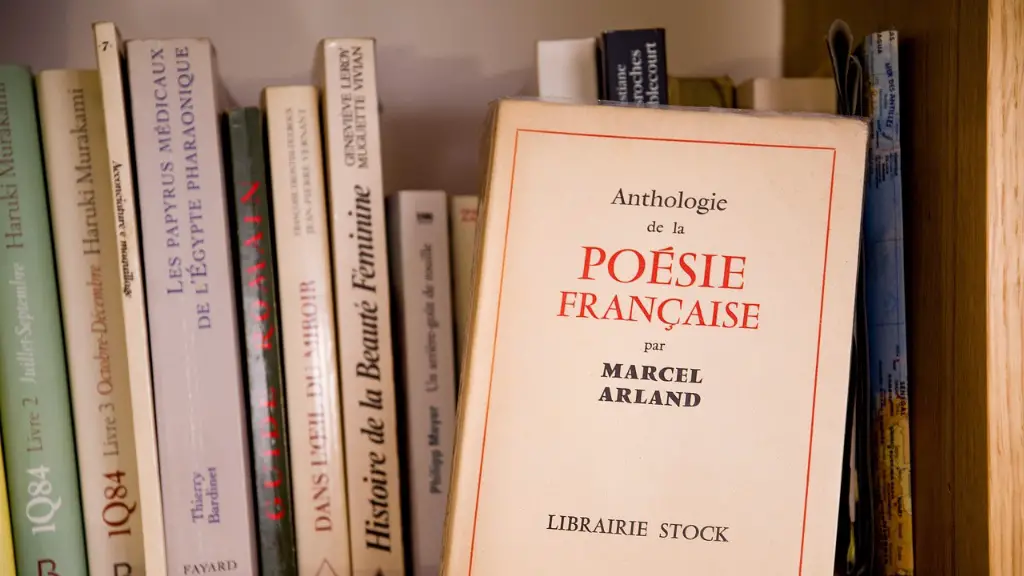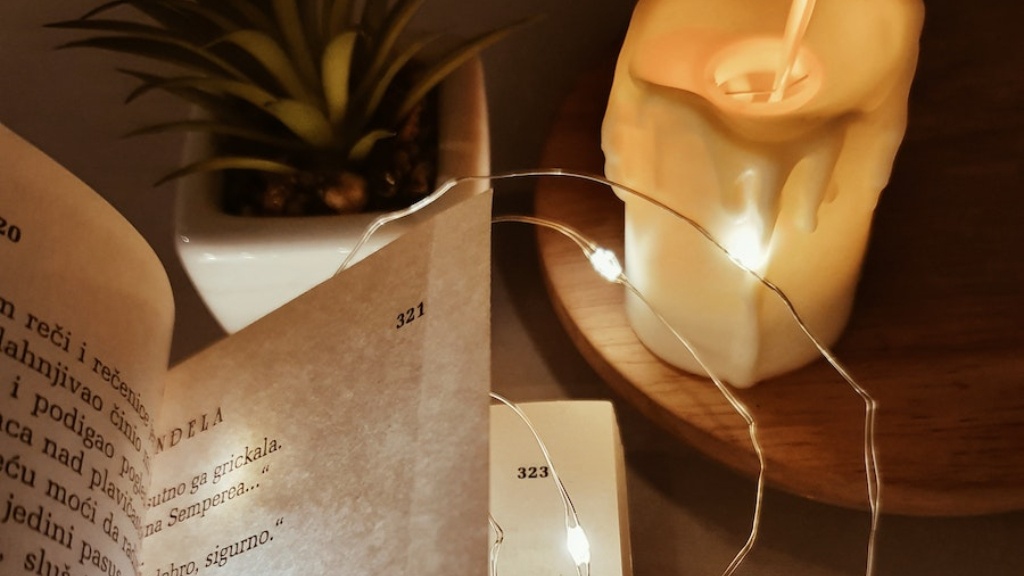Religious Experience
Among the influences that pervaded Emily Dickinson’s life and ultimately her poetry were her intense religious experiences. Dickinson’s early religious experience occurred in the company of her family, as well as the three-hour Sunday services of Amherst’s First Congregationalist Church. Dickinson was baptized in that same church as an infant. She was formally educated in religious principles as well as in Amherst Academy and Mount Holyoke Female Seminary. Although her stated family religion was Congregationalist, Emily embraced many of the tenets and expressions of Calvinism.
Dickinson seemed partially drawn to Calvinism because of its simplicity, but primarily because of its unflinching surety. Its notion of damnation was the only religious answer that Emily found satisfactory for suffering and death, even though the human tragedy of the losses in her life buffeted her throughout her lifetime.
Dickinson’s travels to other churches as well as her exhaustive reading in religious literature, philosophy and literature also had an effect. From this, current scholars agree that what Dickinson wrote was most likely a paraphrase or hybridization of her religion, rather than a strong commitment to any single one. Consequently, Dickinson’s religious beliefs challenged the conventions of her day that limited her to one set of religious doctrines.
The contents of Dickinson’s religious experience was much different than other adherents of the established church. Her writings were filled with psychological implications of sin, despair, and dread. She also embraced themes which were not typical to typical Calvinist works such as the pains of living in a mortal state, and a belief that death was a doorway to eternal life and serenity.
In poem #1129, Dickinson reveals her doubts in the after-life, a concept that starkly differed from the doctrines of Calvinism:
“How much of insect could I bear – If He should take me to the skies – How hastily should I turn, – If He should drop me from His eyes – Could I survive His mellow stare – Could I endure to be – So scanned, by what I half saw there- Too reverent to be free?”
Here Dickinson is questioning the salvation of her soul. She may be asking if she would truly be worth savin, because she fears that God is too wise and she is too small. The idea of being worthy or unworthy is a reflection of Dickinson’s feelings of unworthiness.
The Writing Process
Dickinson’s writing process and the way in which she composed her poetry was also heavily influenced by her religious experience. Emily wrote mainly within the religious format of the sonnet – that is, a poem comprised of fourteen lines and a rhyme scheme. In these sonnets, Dickinson often took the form of a prayer or an offering.
Narrative poems were also heavily employed to indicate Dickinson’s worldview; they were a source of comfort, inspiration, and solace. Dickinson’s faith was so strong that in continuing to write in this form she was able to maintain consistency and energy of religious depth in her work. The techniques used to construct her poems also offer insight into her beliefs. Bible phrases, themes of prayer, spiritual discipline, and her frequent use of the word “God” appear in many of her poems.
In the poem #1129, she reflects on the power of a higher power and her relationship to it through the use of vivid imagery and poetic devices:
“Not know the change if He could show, – So Humble, I believe His sight – Nor dared dispute His slightest No – Nor chose to know a second time – Not dared to question His rebate – His punctual blues of Heaven, – And He and I, I conciliate – Since He disclaims me – ’tis my Heaven.”
Through the poem, Dickinson conveys the idea of a spiritual power holding authority over her life. Dickinson expresses a willingness to place her trust in that power, and that she believes in the ultimate wisdom of this higher being.
The Afterlife
Emily Dickinson was also consumed by the idea of death and the afterlife. Since conviction of religious faith and the concept of a heavenly paradise were two of her enduring beliefs, she often wrote of death in spiritual terms. Perhaps most importantly, Dickinson’s idea of the afterlife was not one of punishment and no escape, but rather of a second life and the potential to gain spiritual enlightenment after death.
In poem #1732, she conveys a sense of possibility for a life after death and the possibilities for spiritual growth:
“The Sands of Life keep rolling on, – I ponder on their gloomy way,- I often gaze beyond them, – To the immense and silent shore,- Where the Eternal walks alone – Already past the breakers’ sway.”
The poem’s tone implies that the afterlife is a place of peace and solace, where an individual might be able to have some kind of spiritual communion with a higher power. The imagery of the sand keeps rolling on and the eternal being walking alone suggest a focus on longevity and timelessness.
Social Relationships
Dickinson’s writings are not limited to religious themes. They include social relationships between herself and those around her. Through these narratives, Dickinson expresses her feelings of isolation, alienation, and loneliness from the people and things in her life.
Dickinson scrutinized and examined the relationships she had with her loved ones objectively, and wrote of the gaps, misunderstandings, and miscommunications found therein. In poem #1598, she speaks to the distance between herself and those around her – and her inability to bridge that gap:
“If I could be the one they need, – But just one hour to be alive – If I could move the least degree – The Dust of Love revive.”
These lines restate Dickinson’s need to be loved and understood, but her predicament is more complicated than this simple plea. Throughout her life, Dickinson was a solitary figure and although she held deep relationships with a few people, many distanced themselves from her because of questioning nature and opinions.
Loneliness and Longing
Emily Dickinson’s writings also reveal a deep and sincere loneliness that she experienced due to her limited human relationships. Her loneliness was a spiritual loneliness, feeling the absence of a visible and comprehensible god. This loneliness was augmented by her wish for a union with a higher power and yet her awareness of the unbridgeable gap between the human and the divine.
Dickinson expressed these feelings of loneliness and longing with a unique combination of religious and romantic language. In poem #1732, Dickinson even questions the existence of God as a result of her loneliness:
“If God were not, – Were nothing I – In whom to countenance my pride – Did I to Him belong,- Since ample Earth and ample Skies – Cannot one thought of solace bring – How could I suffer Him, I- Who flung me to the Nothingness – No shadow of a duration lies – Between the sole and the abyss?”
In this poem, Dickinson expresses her doubts in God’s presence and her inability to comprehend why she, a being whom He created, should be suffering. It captures the sense of full-circle, Dickinson’s belief that God created all of existence and is the ultimate source of her pain and self-doubt.
Imagery and Symbolism
In her writings, Dickinson utilizes imagery and symbolism to express her relationship to the spiritual world around her. Dickinson often took mundane items and made them a symbol for something much greater. In one poem – #1129 – the butterfly is used to symbolize the possibility of a higher power:
“I never saw a moor,- I never saw the sea – Yet know I how the heather looks – And what a wave must be – I never spoke with God – Nor visited in Heaven – Yet certain am I of the spot – As if the chart were given”
In this poem, Dickinson conveys her faith in the unknowable, that which her physical eyes cannot see. She suggests that while she may not have seen the moor or the sea, she has faith that such places exist without ever having to see them. Similarly, Dickinson feels that a relationship to a higher power is possible without ever having to actually have a conversation with god or visit heaven.
Nature’s Influence
Nature was a frequent theme in Dickinson’s poetry. She likened nature to the human condition and used it to mirror her own emotions, doubts and philosophy of life. Nature was not only a means to describe beauty but also a tone to reflect feelings and emotions of the soul.
In poem #1732, Dickinson uses nature as a way to explore her admiration and reverence for God:
“My cheek consumes until I burn – Such thoughts as keep me meek – I lift my head in silent thank, – For Nature’s voice divine So near the Maker I discern, – I bend my soul, His praise to learn.”
In this poem, Dickinson turns to nature to explore her spiritualism – to understand and to connect with God. Dickinson recognizes the power of nature and respects its messages, believing that God is a part of this grand design. Nature reveals the divine presence which Dickinson believes so strongly in.
Frustration and Disappointment
Dickinson was acutely conscious of the many contradictions in conventional religious thought. She grappled with conflicting pronouncements, with religious conventions that denied the equality of all men, and with the limitations demanded of her as a woman. Religion constantly presented personal and existential dilemmas for religious seekers such as Dickinson.
In poem #1129, she expresses her frustrations with religion:
“It’s possible to be a Saint – Without Canonization – I knew a General who, to me – Appeared no next to none – Yet never met the Board – By Bishops unspecified – That set him off Approbation – Nevertheless He served the Lord – As well as Bishops do – Much better than that did befall – List, Drains receive – His own ineffable Distract – Was credible to me.”
What Dickinson is trying to convey here is that religion is not always the fair and consistent institution it purports itself to be. This poem shows her frustration with the Church and its traditions, which often do not live up to the lofty standards imposed by religious doctrine.
Impact on Writing Style
Emily Dickinson’s spiritualism served as a deep source of inspiration and contemplation throughout her writing career. Her thoughts and beliefs were reflected in the vivid imagery, romantic symbolism and the often dark, introspective language she employed in her poetry. Her enigmatic expressions express her profound exploration of the spiritual side of life and how it is entwined with the reality of life on earth.
In poem #1732, Dickinson conveys her beliefs in a masterful and poetic way:
“My spirit likes the thoughts too long – To cease upon mortality – That thinks at something far beyond – Its own peculiar sphere – To hail Omnipotence the Lord – Above, the ceaseless change – To find an immortality – Beyond its vessel range – To live by faith and never see – Its utmost goal of Joy – To bear beyond the transient days – The silent grave, in Glory.”
In this poem, Dickinson expresses her faith in a higher power, as well as her quest for a life beyond mortality. Her questions of self in this poem – who am I, what is my destiny, who is the divine being – all point to the religious and spiritual convictions Dickinson held
.





